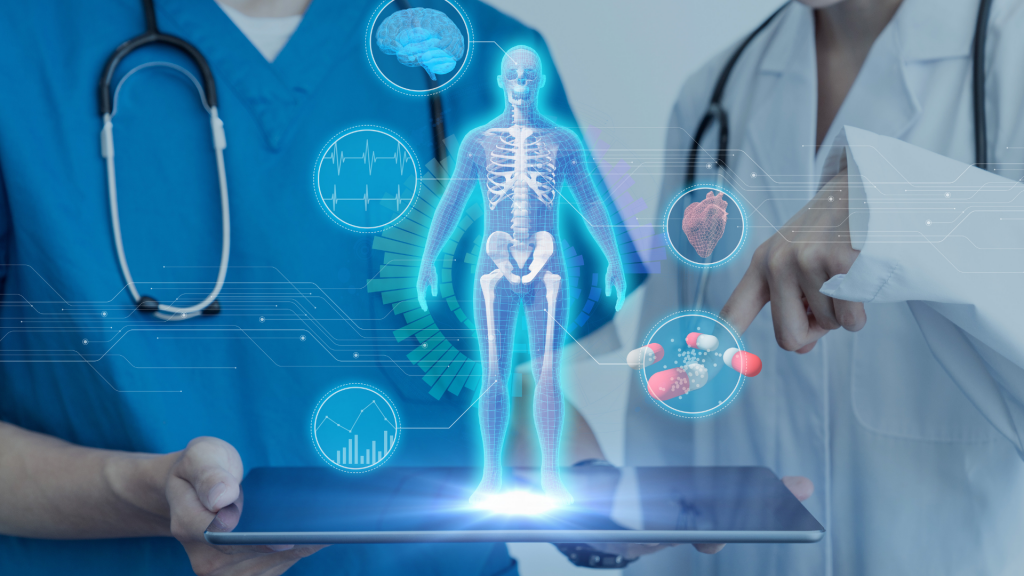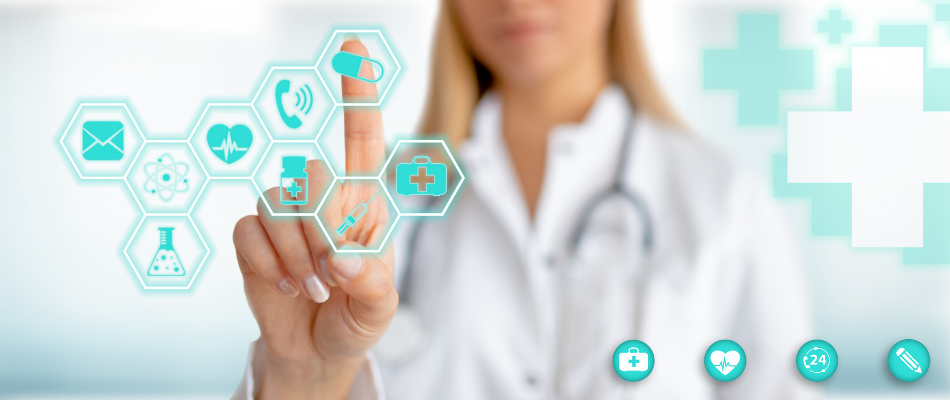Advanced technologies have been creeping into our lives. They have become an indispensable part of the way we live. They have made our lives easier, more efficient and safer. And nowhere is this more apparent than in healthcare. Medical and healthcare technologies have been advancing at a rapid rate and it has been accelerated by the Covid-19 pandemic.
 Read on to learn about the 14 medical technologies set to change our world.
Read on to learn about the 14 medical technologies set to change our world.
1. Advanced telemedicine
Telemedicine has become commonplace as a result of the Covid-19 pandemic. Many people consulted their doctors remotely and received safe, responsible support. Virtual visits are an effective way to increase access to primary care and urgent care, as well as to improve collaboration with clinics, long-term care facilities and mental health services. Once the regulatory challenges have been resolved, we will see even more applications of telemedicine.
2. Chatbots in healthcare
Chatbots provide services in many areas of our lives, and healthcare is no exception. Chatbots can help with consultations, medication management, and emergencies. They provide the user with an immediate response, and an anonymous environment to share personal information.
3. New methods of drug development
The Covid-19 vaccines were developed safely and effectively in under a year. This was made possible by regulatory fast-tracking and innovative medical trial protocols. This is a remarkable achievement. Drug companies collaborated, rather than competed, and regulatory red tape was eased. This points to a new way of developing and testing new drugs and therapies.
4. Wearing your heart on your wrist
Wearable technology started with fitness tracking, but its use has branched out to all sorts of other applications. Wearable technology can not only monitor fitness and vital signs but can also monitor blood glucose levels. The benefits of capturing personal health statistics over time have the potential to simplify diagnostics and treatment.
5. Data-driven healthcare
Healthcare data is an important part of managing health. The collection of health data continues to accelerate. As a result, new applications are possible and there is greater potential for improving treatment options. This is very beneficial for improving patient health outcomes. In the past, this sort of cooperation was hampered by a lack of interoperability between organisations, which curtailed the effective use of consolidated large volumes of health data. The Covid-19 epidemic has sped up the sharing of healthcare data.
6. Augmented reality and virtual reality
Augmented and virtual reality have many applications in medicine. Simulations can support medical education. Imagine being able to see the inside of a patient’s body by superimposing data from 3D scans and CAT scans. Surgeons can practise procedures in a virtual reality simulation. Virtual reality can assist patients to recover from amputations or re-learn motor skills. Virtual reality is easy to learn and cheap to use.
7. Nanomedicine
Nanomedicine is medical technology at the atomic, molecular, or supramolecular scale. Nanomedicine is the use of nanoscale materials, such as biocompatible nanoparticles and nanorobots, for diagnosis, delivery, sensing or actuation purposes in a living organism. These tiny objects are programmed for important tasks. It has significant application in cancer therapies as well as combatting viruses and bacteria.
8. 5G-enabled devices
Artificial intelligence, the internet of things and Big Data need lightning-fast internet connectivity to be effective. 5G technology can extend medical care to millions. 5G-connected sensors and medical devices can capture and transmit data nearly instantaneously. That will improve patient monitoring, which will, in turn, improve patient outcomes. Remote surgery, using robotics, has the potential to become the norm. Robotic surgery is less invasive, more precise, minimises infection, and heals quicker.
A mobile device and a two-way camera can allow healthcare workers to have remote one-on-one consultations with patients from a distance. Wearable devices can check for heart rate, blood pressure, and blood oxygenation. Web-enabled and app-enabled supplements can filter patient requests accordingly and save both providers and patients critical time and energy. These devices and applications will reduce barriers to care, such as travel, language, and geography. 5G devices can assist older people living alone with regular check-ups to avoid strokes, heart attacks, and other adverse events, and there is less risk of exposure to other diseases
9. Healthcare digital assistants
Digital assistants like Alexa, Cortana and Siri have changed the way people interact with technology. These technologies are now taking on a similar role in healthcare. Natural language processing and ambient listening have natural applications in the capture, analysis, and utilisation of health data. We will soon see an on-demand voice assistant who can conduct a conversation with a patient and recommend treatment.
10. Chips with everything
Medical testing has relied on getting samples to a laboratory for analysis. Testing is the first step in combating infectious diseases. This is time-consuming, especially in remote areas. Technology now allows the laboratory to come to the patient. A chip card can accurately test for Covid-19 and other infections. This development brings about lab testing that is done quickly, safely, cheaply, and efficiently.
11. Personalised medicine
Each of us now has a considerable body of personalised individual health data. This data can be searched, analysed and systematised. This is resulting in greater personalisation of medicine – you are now treated as a unique human being, rather than as a generic patient. When combined with your genetic information it can be used to combat rare genetic conditions such as Huntington’s Disease, neurologic disorders, and forms of cancer.
12. Blockchain
Where there is data, there will be fraud. Data breaches cost millions. Medical data contains the most private and valuable information about an individual. Blockchain technology can address these risks. Built around a system of unbackable cryptography, blockchain tech keeps a distributed ledger of vast amounts of information. Data can be kept safely and securely. This is particularly valuable for medical aid and medical insurance companies.
13. AI and machine learning
Artificial intelligence and machine learning are powerful technologies to turn vast amounts of raw data into usable intelligence. They can accurately and quickly analyse images such as X-rays, CAT scans and ultrasounds. Algorithms and virtual assistants process the data and enable physicians to spend more empathetic time with patients.
14. 3D printing
3D printing allows medical devices to be created almost instantaneously, to a patient’s exact requirements. Medical devices can be matched to the exact specifications of a patient and be compatible with their natural anatomy. The patient is more likely to accept implants, prosthetics, and devices when they’re perfectly aligned and customised, and the patient experiences greater comfort and improved performance outcomes as a result. Organ transplants may one day be obsolete as a result of these developments.
Technology is assisting us with improving our health and our sense of well-being. We have considered only a few of the many changes and developments that technology is bringing to help us. But we also have to do our part by eating healthily and exercising sensibly.
Read also:







